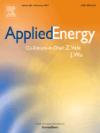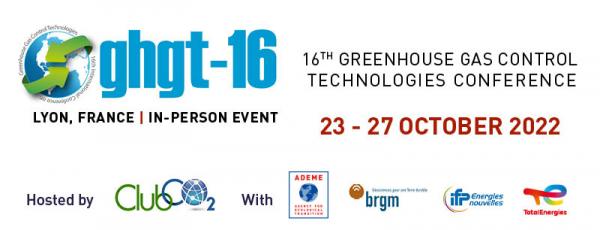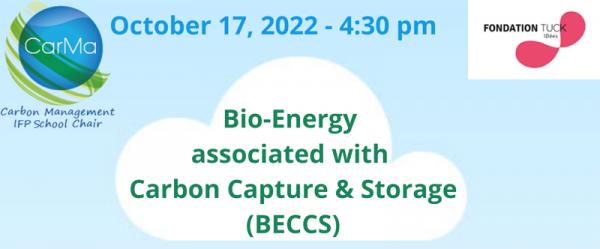Year 3 Post-Doctoral Program (November 2021 - October 2022)

Dr. Carlos Eduardo Andrade Sandoval is passionate about protecting the environment and the planet, that is why his work focuses on studying different options that can help society to reduce the environmental impact of its activities. Through his studies and professional experience, he acquired important expertise in the prospective modeling of energy systems and of circular economy.
After a Master in Environmental, Energy, and Transport Economics at the University of Paris Saclay, he started a doctoral program at the Center for Applied Mathematics of MINES ParisTech in Sophia Antipolis in the south-east of France. The work developed during his Ph.D. focused on the long-term modeling of energy systems and the assessment of the challenges of the low-carbon energy transition, and circular economy of the territories, namely here, that of the French PACA region. More precisely, he built a prospective model, through which different energy transition trajectories for the region were studied. He sought to analyze how the region could mobilize its renewable resources, and thus contribute to France's decarbonization strategy. He also analyzed how implementing a circular economy perspective for the development of the regional energy system could help the achievement of the decarbonization objectives.
Carlos was part of the CarMa research team from October 2021 to October 2022. He is now with IFPEN.
Negative Emission Technologies: an outlook on their role in the decarbonisation of energy-intensive industries (EII) with TIAM Model
Id. card:
Project Type: Post-doctoral research work
Duration: 18 months, starting on October 2021
Ideal profile for the candidate: PhD in Life Cycle Assessment on energy production / CCUS technologies
Supervisor: Dr. Gondia Sokhna Seck (IFPEN) and Sandrine Selosse (CMA)
Research topic
In the context of the European 2050 climate-neutrality target, the candidate will investigate the potential deployment of bioenergy with carbon capture and storage (BECCS) in the Energy-Intensive Industries (EII) and the additional costs associated to them. Indeed, the decarbonization of industry is going to be a huge challenge to achieve GHG reduction target. In addition, because electricity is not always a technical solution to decarbonize for the Energy Intensive industry (EI), this sector is identified to be an important sector to explore using an Integrated Assessment Model (IAM). The approach of the Integrated Assessment Model (IAM) aims to integrate the entire chain of implications in an approach that can be described as "from sink to atmosphere". It requires a real effort of integration but loses in precision on each particular sector. Thus, the EI industries used to be modelled by end-uses, contrary to specific “bottom-up” model related to industry sector. The candidate will be in charge of the additional necessary developments of the TIMES Integrated Assessment Model (TIAM), with which the analysis will be conducted. He could start with Iron & Steel sector for example to fix the methodology and then introduce the others EII as for example Cement, Pulp & paper, Glass, Ceramic, Chemicals. To assess the deployment of BECCS technologies, it would be of interest to investigate the rump up in two periods, considering international climate targets: 2020-2040 and 2040-2060.
The study will start with a comprehensive analysis of national/regional biomass availability with its inherent characteristics (type of biomass, carbon content, production costs,…) for different EII i.e. what type of biomass available, share of biomass technically allowed by industry process over the time horizon. The aim here is to provide to the model the biomass constraints i.e. its availability, technical constraints and economic features for the scenarios. The analyses will also cover the evolution of the processes and the demand of these EI sectors by 2050.
Different scenarios will be analyzed in order to better assess the potential to directly/indirectly remove atmospheric CO2 through bioenergy with CO2 capture and storage (BECCS). A reflection should be carried out ex ante to characterize these scenarios based on key performance indicators (KPIs). Thus, this prospective modelling will allow observing the shape of investments in response to energy constraints or incentive policies within a deep decarbonization pathway of the EI sectors.
The candidate will have to investigate a range of technological and process abatement options, in different development stages, that could potentially, contribute to reducing emissions from manufacturing of CO2 emission-intensive commodities (e.g. iron & steel, pulp and paper, cement, chemicals…). It will depend on the industrial process associated (combustion, gasification, etc.). Technical data related to the capture rate treatment of the flue gas will provide the bioCO2 captured profile by scenario and its geographical localization. Here an option can be developed on bioCO2 utilization in the model allowing the utilization of CO2 as raw material or as utility (e.g. in greenhouses) providing some revenues to the system.
In the implementation costs of the BECCS technology, the transport of CO2 to storage needs to be taken into account. It will be related to the quantity of CO2 to transport, the distance from the capture to the storage and the mode of CO2 transport (ships, pipelines, trucks…etc.). The capacities of storage will have to be in line with existing and available data.
The objective of the modelling is to analyze and evaluate decarbonization pathways of the EII sectors. What is the overview of technological options, in various stages of development, that could contribute to decarbonizing energy-intensive industries? How would the negative emission technologies potential evolve and fit in to the EI sectors strategic plans by 2050? What role in meeting the IPCC 2°C scenario?
Sensitivity analyses will be tested in order to:
- Assess the impact of the discount rate which could play a significant role on the competitiveness of capital-intensive technologies such as the negative emission technologies (NETs).
- Assess the impact of the implementation of DACCS in EI sectors to indirectly reduce their CO2 emissions.
This modelling aims to discuss the choices between maximizing the economic value (rents from negative emissions) and maximizing the energetic value (decarbonizing challenging sectors) of bioenergy carriers. It’s a trade-off between maximizing negative emissions and associated revenues and enabling a low-carbon transition in sectors with little or no other options
Bibliography:
- Embedding power system’s reliability within a long-term Energy System Optimization Model: Linking high renewable energy integration and future grid stability for France by 2050, Gondia Sokhna Seck, Vincent Krakowski, Edi Assoumou, Nadia Maïzi, Vincent Mazauric,
- The Value of BECCS in IAMs: a Review, Alexandre C. Köberle, Current Sustainable/Renewable Energy Reports (2019) 6:107–115
- Towards net-zero emissions in the EU energy system by 2050 Insights from scenarios in line with the 2030 and 2050 ambitions of the European Green Deal Tsiropoulos, I. Nijs, W. Tarvydas, D. Ruiz, 2020
- Seungwoo Kang, Sandrine Selosse, Nadia Maïzi. Contribution of global GHG reduction pledges to bioenergy expansion. Biomass and Bioenergy, Elsevier, 2018, 111, pp.142-153
- Sandrine Selosse. Bioenergy with Carbon Capture and Storage: how carbon storage and biomass resources potentials can impact the development of the BECCS. Bioenergy with Carbon Capture and Storage. 1st Edition. Editors: Jose Carlos Magalhaes Pires Ana Luisa da Cunha Goncalves. Elsevier. ISBN: 9780128162293. 318p, 2019
|
Image

|
Net-negative emission opportunities for the iron and steel industry on a global scale |

CarMa at GHGT16 next October in Lyon, France
The CarMa research team will be present at GHGT16 with up to 4 communications

October 17, 2022 4:30 - 7 pm: CarMa Online Conference at Fondation Tuck
CarMa is pleased to share on its ongoing research activity

CarMa research results presented at the TEcX workshop (September 13, 2022)
Poster: Negative Emission Technologies for industrial decarbonization: the case of the iron and steel industry

New CarMa Post-doctoral student arrival on the role of NETs in the decarbonisation of energy-intensive industries (October 8, 2021)
The CarMa research team is very pleased to welcome the arrival of Carlos Eduardo ANDRADE SANDOVAL (PhD) at the Economics and Environmental Evaluation…



